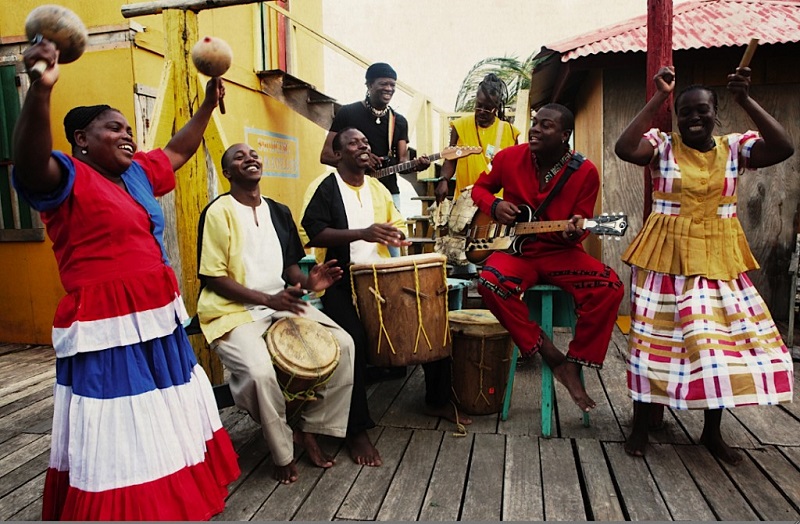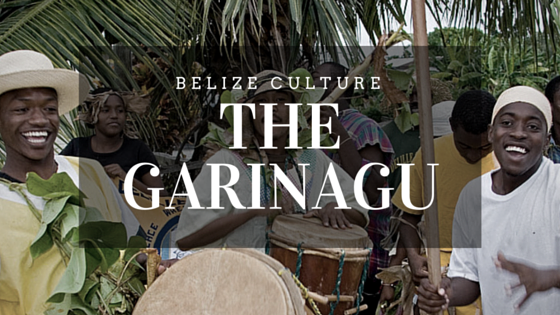The Garinagu – The Culture Capital of Belize!
Belize is considered a “melting pot of cultures”. People of different skin tones, different languages, and people belonging to different ethnic groups live in harmony with one another in this tiny Central American country. Ethnic groups in Belize include the Creole, Mestizo, Maya, Garinagu, Asian, East Indian, and Mennonites, among others.
Every year on the 19th of November, thousands of Belizeans celebrate the arrival of the Garinagu people to the southern shores of Belize, a public and bank holiday known as Garifuna Settlement Day. Part of this celebration includes a reenactment of their arrival via the Caribbean Sea.
The theme for 2015 is: “Bungiu Lerebei Sun Katei. Lidan Yein Fureindei luma Benefaü Awanseruni houn Garinagu- which means: God is the strength of all things. Garifuna progress comes from education and hard work.”
In light of this we decided to share about the rich Garinagu history and culture:
GARIFUNA FACTS
- Though commonly referred to as “Garifuna”, the people are properly called “Garinagu” and the culture and language are “Garifuna”.
- The Garifuna make up the fourth largest ethnic group in Belize, about 7% of the population.
- Garinagu or Black Caribs, are descendants of two ethnic groups, Carib Indians and Black Africans that lived on the island of St. Vincent.
GARIFUNA HISTORY

- In 1635, two Spanish ships carrying Nigerian slaves floundered and sank off the coast of St. Vincent. The slaves that survived and swam ashore found shelter in the existing Carib Indian settlements. Over the next century and a half, the two people intermixed, intermarried and eventually fused into a single culture, the Black Caribs or Garinagu.
- By 1773, the Black Carib was the dominant population of St. Vincent. But, European politics began to exert its influence throughout the Caribbean. A series of wars between the French and British on St. Vincent culminated in a final battle on June 10th, 1796, where the French and their Carib allies were forced to surrender and leave the island. Thus would start a journey by the exiled Caribs in search of a home.
- The British deposited the Caribs on the island of Roatan, Honduras. Shortly after, the entire marooned population migrated to the mainland of Honduras and allied with the Spanish in the fortress town of Trujillo. Unfortunately, a brief civil war in 1832 found the Caribs on the wrong side and once again many were forced to flee to neighboring Belize formally British Honduras.
- The first Garifuna arrived in British Honduras on November 19, 1802
- They established villages such as Barranco, Seine Bight, Dangriga, Hopkins and Punta Gorda
GARIFUNA HISTORY

- The Garifuna flag consists of three horizontal strips of black, white and yellow, in that order, starting from the top.
- The colors yellow, white and black represent the sun, peace and pride of the Garinagu people.
GARIFUNA FOOD

- Traditional Garifuna foods are based around chicken, fish, cassava, bananas, and plantains.
- One of the staples of the diet is cassava. Cassava is made into a bread, a drink, a pudding, and even a wine! The cassava bread is served with most meals. The process of making the bread is very labor intensive and takes several days.
- Other common traditional Garifuna meals are, Hudut and Dharasa.
GARIFUNA MUSIC

- The main traditional instruments are drums and maracas.
- Drums play an important role in Garifuna music.
- The main drum is the Segunda (bass drum). The drums are normally made by hollowing out logs and stretching antelope skin over them.
- The two main Garifuna genres are Punta and Paranda
GARIFUNA RELIGION AND BELIEFS

- Garifuna religion consists of a mix of Catholicism, African and Indian beliefs.
- A shaman known as a buyei is the head of all Garifuna traditional practices.
- They believe that the departed ancestors mediate between the individual and the external world. If a person behaves and performs well then he will have good fortune. If not, then the harmony that exists in relationships with others and the external world will be disrupted leading to misfortune and illness.
- Mystical practices and participation in the Dugu orders are also widespread among the Garifuna.
- Their spiritualism is creatively expressed through music, dancing and other art forms.
From all of us here at Chaa Creek we wish our Garinagu friends, neighbours and family a Happy Garifuna Settlement Day!

When I heard the word Garifuna on a radio report about the St Vincent volcano, I knew there was a link with Belize. I went there as part of a trip around the Mayan sites 20 years ago. We travelled around the Yucatan peninsula, Guatemala and Belize by bus. Thank you for more info on the culture.